
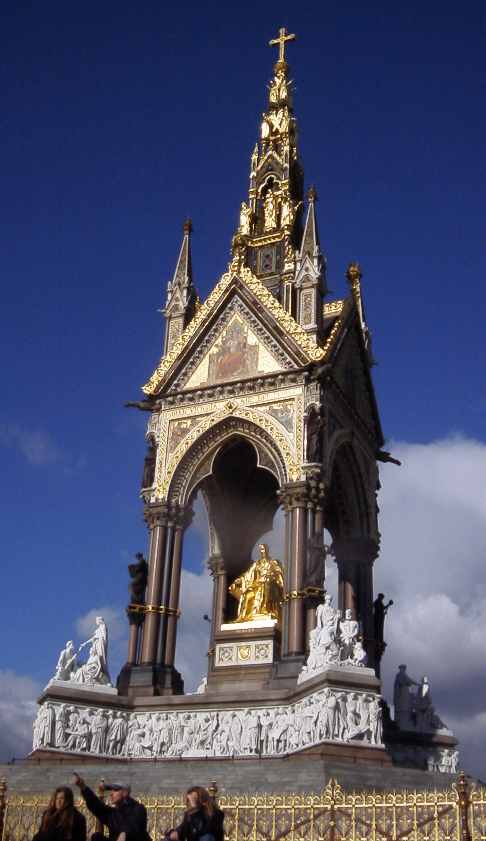
Our previous visits to London had shown us the Albert Memorial under wraps so we were anxious to see what the $30 Million restoration fund would do to this Victorian shrine. We were not disappointed. Some people will spend inordinate amounts of money and time to show their bad taste. And these weren't Texans either.
If you're interested in this sort of stuff, have good bandwidth (12 pictures at about 40K bytes each), and do not get physically sick from puns, read on. If not, you may want to jump to the next page by clicking here.
OK. You've been warned.
The memorial was resplendent in the sun but locked behind a fence visible in this picture behind our favorite model in red:
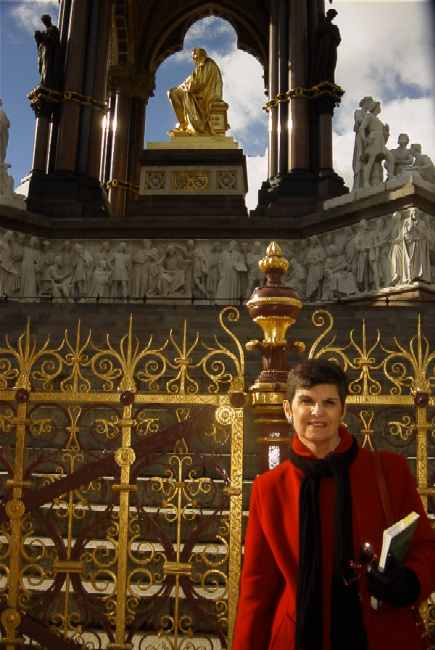
Albert should probably have an obelisk as his shrine since even though dying at age 41 (younger than Elvis), he fathered 9 children (just with the queen, of course, since this was Victorian England). Like most royalty of their day, Albert and Victoria were not only best friends and lovers, but cousins as well. In England they call this loyalty. In the US, we call it the South. They were good breeders quantity-wise and had 40 grandchildren, enough to make most future generations of European royalty crazy. (Now you know why those with nobility in their past often incest-antly tell you about it.)
Victoria mourned Albert the next 40 years and took her time naming everything in South Kensington after him. (Her 63 years were the longest reign in English History, so she had that kind of time). She wanted a huge granite obelisk for Albert's memorial (I am not making this up; in fact, I'd be ashamed to do so). She missed the point when the public subscription came up short and she settled for this then-fashionable neo-Gothic 200 foot tower (probably more if you count those on the statues). George Gilbert Scott, a big figure in the revival of Gothic architecture during the Victorian period designed it (but probably didn't patton it) with many then-famous sculptors participating in the 170 or so reliefs on the pedestal or the many statues holding down each corner.
Here's a view of one side -- see how many figures you can count:
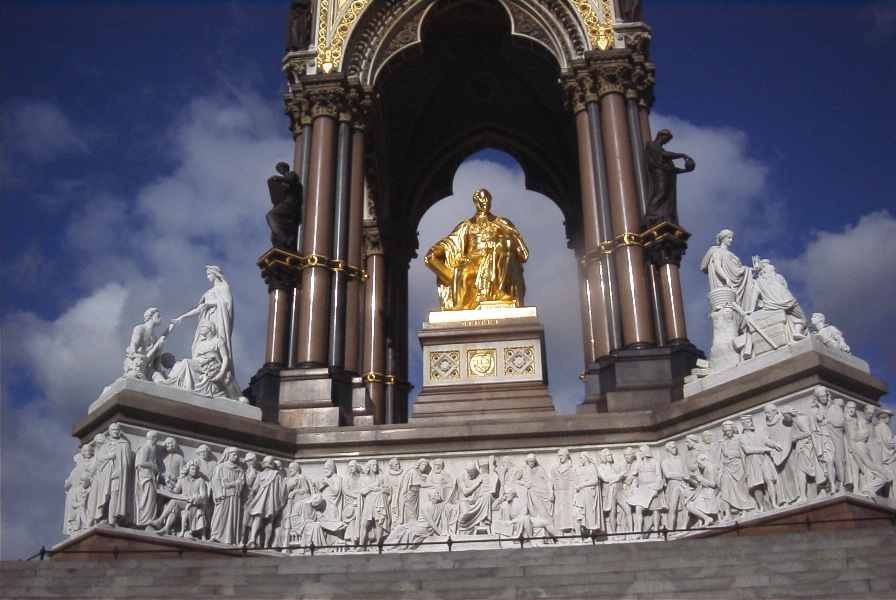
Albert sits (where else) on the pedestal, holding the catalogue of the Great Exhibition of 1851 (his crowning achievement since he was a great exhibitionist; OK, I made that up). We have to hand it to this guy who was the champion of the Exhibition which literally put this area on the map and from which spun so many of the area's museums, most with his name on them.
At the corners of the pedestal are sculptured groups symbolizing manufacturing, engineering, commerce and agriculture (already MECAnized or the new MECA? You be the judge). See if you can guess which one this is:
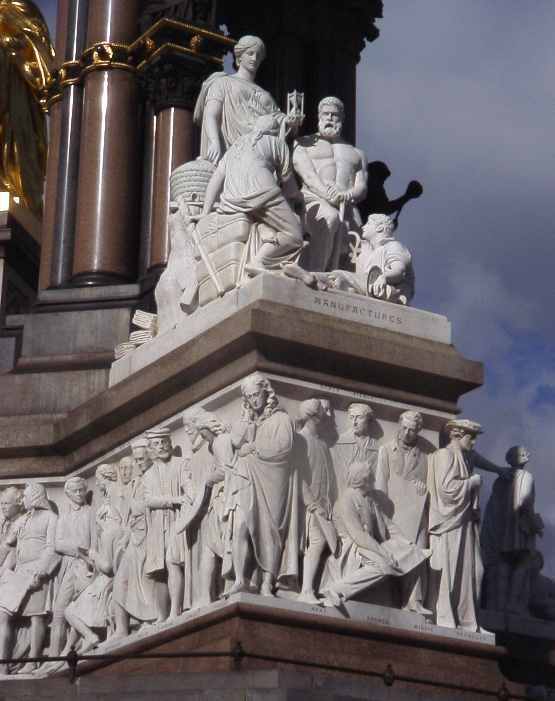
If you've got good resolution you read "manufacturing" on the statue by Henry Weekes. Really it's software engineering. The programmers are timing the response time for Windows 2000 with that hourglass (should they be using a calendar instead?) That's Steve Ballmer on the right, looking like he did when he played ball at Detroit Country Day. The rest have been eating pizza at their keyboards too long.
OK, here's two more for a real test of your ability to interpret sculptures:
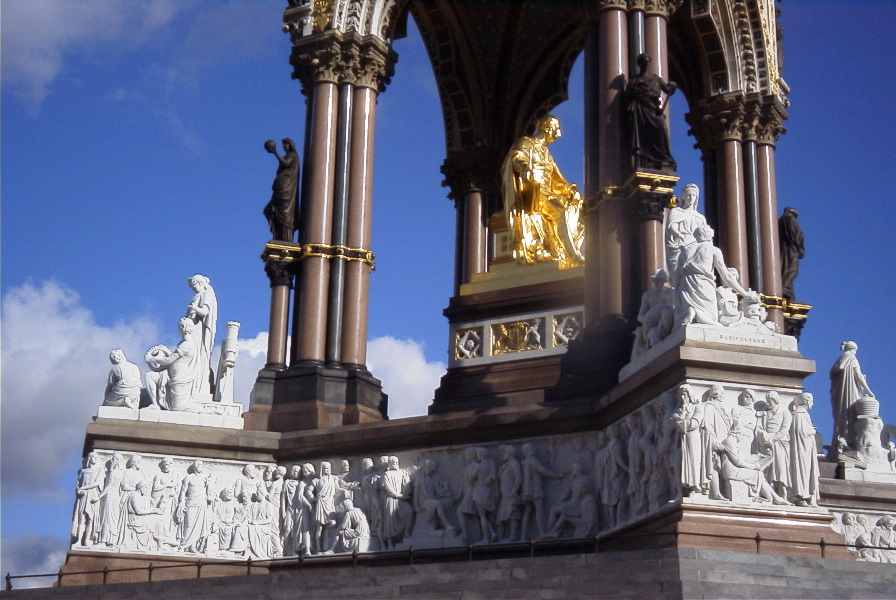
Spun off from each corner of the shrine lie four statuary groups representing continents (Australia didn't make it, the only completely British continent. Probably no kangaroos were willing to pose; ditto on penguins as Antarctica is similarly missing. And why even mention Atlantis?.)
Here's a couple pictures of the Europe group by P.Macdowell. You myth guys are probably getting excited remembering that Zeus raped the goddess Europa by posing as a bull. (Were the gods madder than Royal Families? Is this progress?)
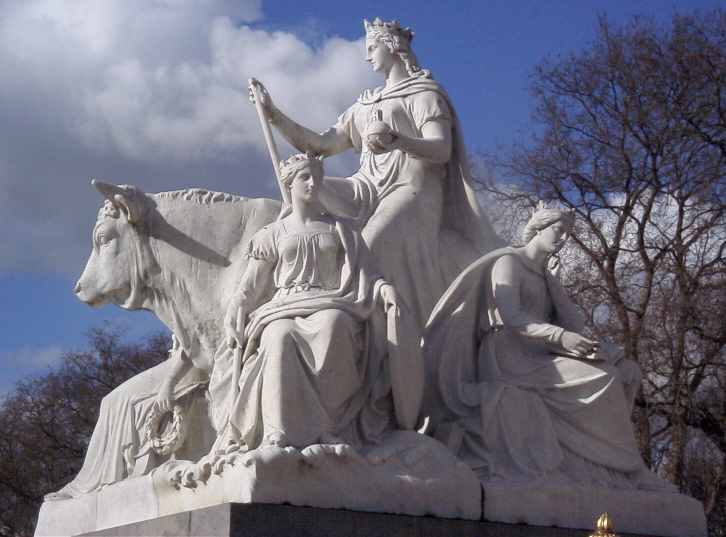
Here's another one of them doing the continental to give you an idea of the positioning of the corner groups:
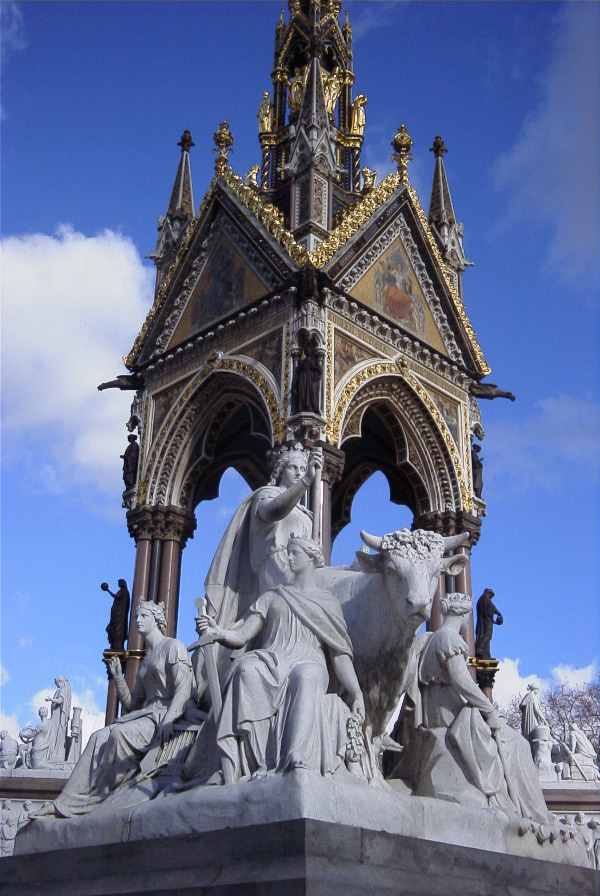
Ready for the Africa group by W. Theed?
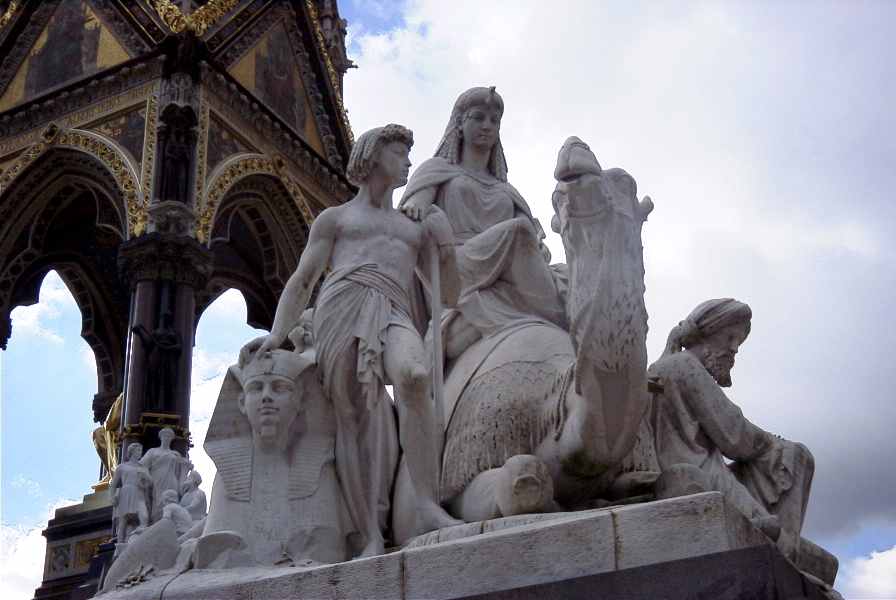
E.E.Z 4 U 2 Say! Stand up for America by John Bell. No bull here just Bell's buffalo. Looking back we Americans can say that we've done our best to wipe out everything in this statue (OK, not everything; we still treasure chests among our many pec-cadilloes).
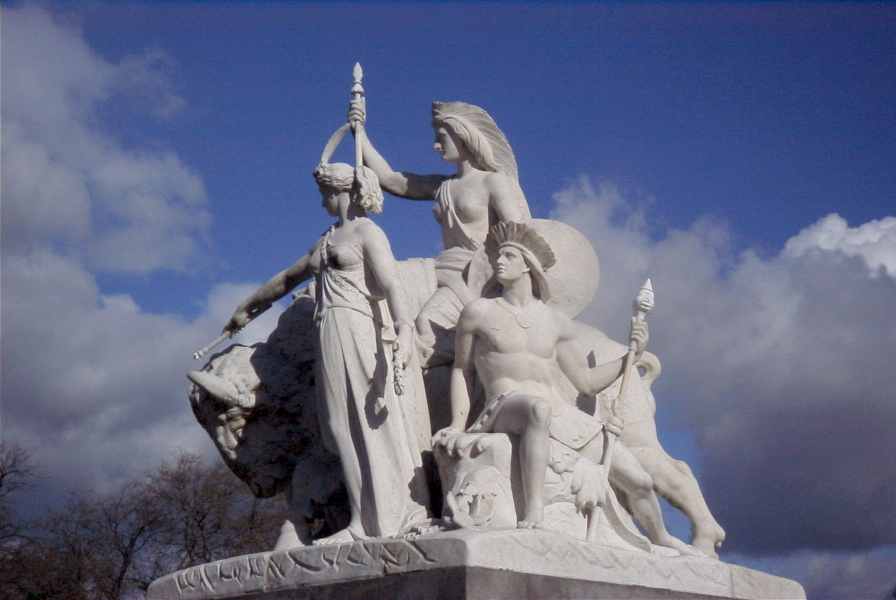
And finally the Asia thing by John Foley. Foley also designed the Alfred statue in the middle but died from a chill taken while working on the statuary. (He was the second sculptor to die trying to complete the sitting Alfred).
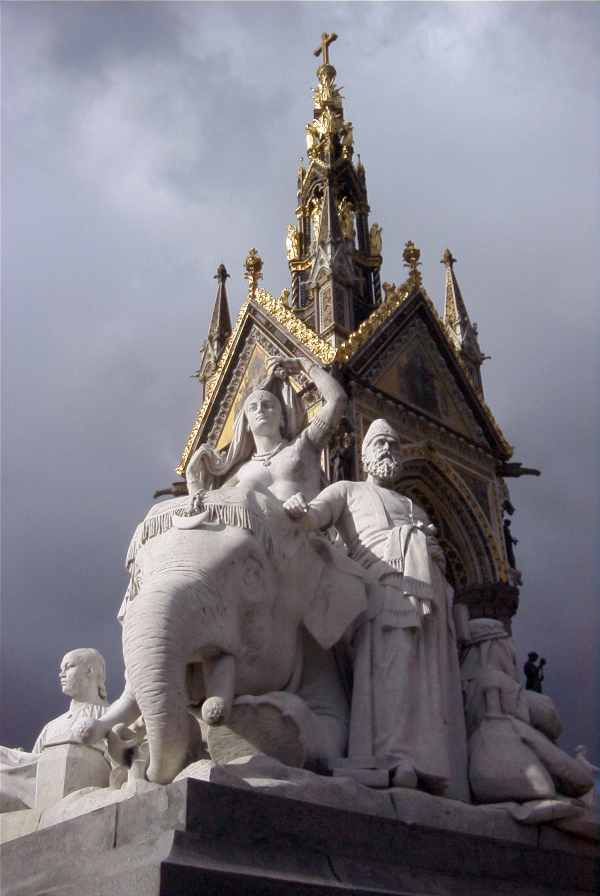
and here's another view showing Omar Sharif on the left:
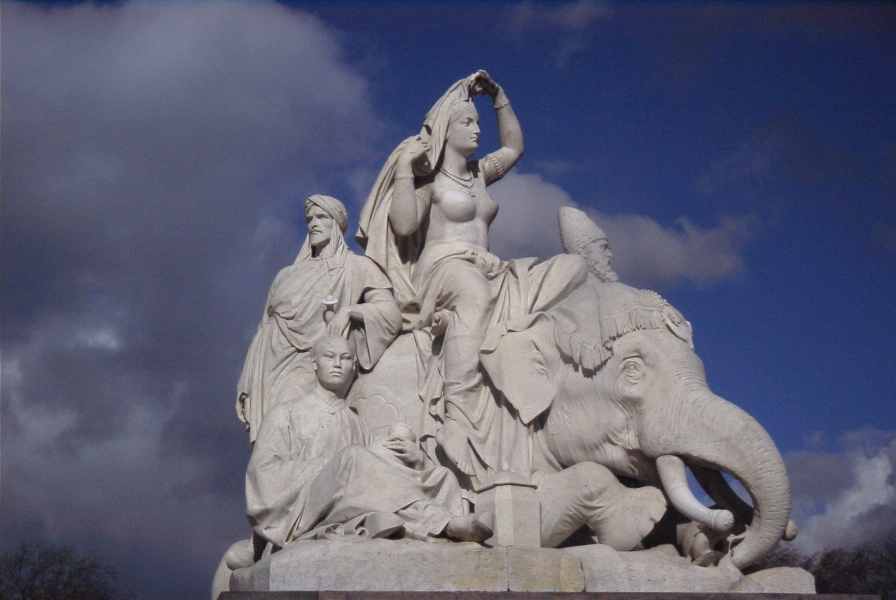
Atop we have, of course, the crowning achievement:
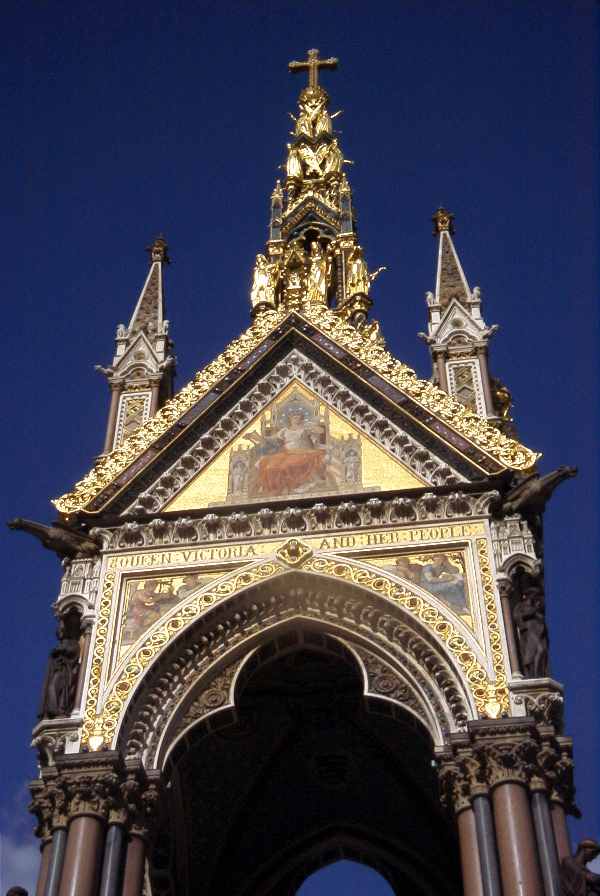
Next we walked by Harrods and then around the periphery of Belgrave square (Thanks for locking the place, you Brits.) Please join us by clicking here.
To see more pictures, especially ones before the restoration began, try this Boston College prof's link: http://www.bc.edu/bc_org/avp/cas/fnart/arch/hvgothic.html
For a more appreciative and thorough discussion of the memorial and many of the statues in Hyde Park, try Bob Speel's excellent walk around the park.
Geek alert! You probably want to study the Great Exhibition more even though it's most famous building (the Crystal Palace) isn't. I'd start with John H. Lienhard's episode. Then move to this long dissertation of how the exhibition created the museams that populate South Kensington to this day.

Where do you want to go today? While we can't get you to the Crystal Palace, here's a few other choices:

last updated 21 June 2007
![]()
This work is licensed under a Creative
Commons Attribution-NonCommercial-NoDerivs 2.5 License.